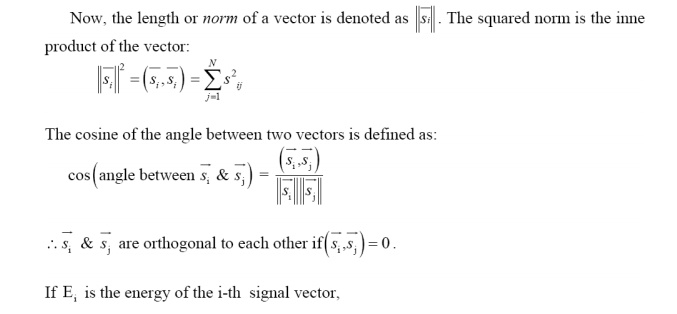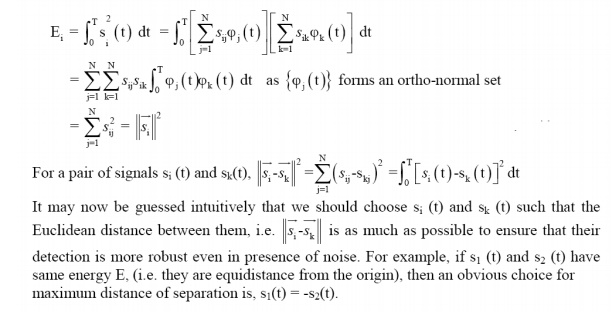Chapter: Digital Communication : Digital Modulation Scheme
Geometric representation of Signals
Geometric representation of Signals:
Derive Geometrical representation of signal.


Basis Vectors
The set of basis vectors {e1, e2, …,en} of a space are chosen such that: Should be complete or span the vector space: any vector a can be expressed as a linear combination of these vectors.
Each basis vector should be orthogonal to all others
· Each basis vector should be normalized:
· A set of basis vectors satisfying these properties is also said to be a complete
orthonormal basis
· In an n-dim space, we can have at most n basis vectors
Signal Space
Basic Idea: If a signal can be represented by n-tuple, then it can be treated in much the same way as a n-dim vector.
Let φ1(t), φ2(t),…., φn(t) be n signals
Consider a signal x(t) and suppose that If every signal can be written as above ⇒ ~ ~ basisfunctions and we have a n-dim signal space
Orthonormal Basis
Signal set {φk(t)}n is an orthogonal set if

Then, we can express each of these waveforms as weighted linear combination of orthonormal signals

where N ≤ M is the dimension of the signal space and are called the orthonormal basis functions
Let, for a convenient set of {ϕj (t)}, j = 1,2,…,N and 0 ≤ t <T,

Now, we can represent a signal si(t) as a column vector whose elements are the scalar coefficients
sij, j = 1, 2, ….., N :

These M energy signals or vectors can be viewed as a set of M points in an N – dimensional
Euclidean space, known as the „Signal Space’.Signal Constellation is the collection of M signals points (or messages) on the signal space



Related Topics